
Gomalia is a monotypic genus of hesperiid butterfly. Gomalia elma, the marbled skipper or African marbled skipper, is found in Africa and parts of Asia.
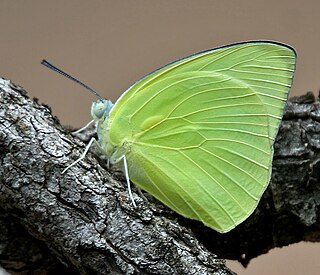
Catopsilia pomona, the common emigrant or lemon emigrant, is a medium-sized pierid butterfly found in Asia, Cambodia and parts of Australia. The species gets its name from its habit of migration. Some early authors considered them as two distinct species Catopsilia crocale and Catopsilia pomona.

Miletus symethus, the great brownie, is a small butterfly found in India that belongs to the lycaenids or blues family. The species was first described by Pieter Cramer in 1777.

Kaniska canace, the blue admiral, is a nymphalid butterfly, the only species of the genus Kaniska. It is found in south and southeast Asia.

Prosotas noreia, the white-tipped lineblue, is a species of lycaenid butterfly found in South Asia and Java.

Prepona is a genus of Neotropical charaxine butterflies in the family Nymphalidae. They are strong fliers in tropical forests where they feed on fermenting fruits and animal dung. The underside of the wings is pale greyish or brownish, while the upperside is dark with distinct iridescent blue markings. A few species also have orange markings on the upperside of the wings. They are popular among butterfly collectors.
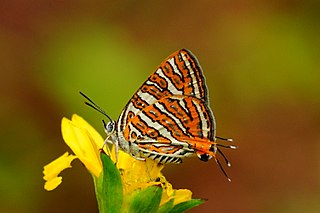
Cigaritis vulcanus, the common silverline, is a species of lycaenid or blue butterfly found in Asia. It was first described by Johan Christian Fabricius in 1775.

Horaga onyx, the common onyx, is a species of lycaenid or blue butterfly found in Asia.

Spilosoma clava is a species of moth of the family Erebidae. It was described by Alfred Ernest Wileman in 1910. It is found in Taiwan.

Spilosoma wilemani is a species of moth of the family Erebidae. It was described by Walter Rothschild in 1914. It is found in Taiwan and Japan's southern Ryukyu Islands.
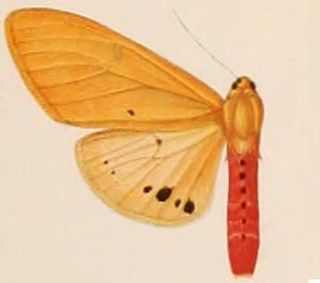
Spilosoma eldorado is a moth of the family Erebidae. It was described by Walter Rothschild in 1910. It is found in eastern India and Sri Lanka.

Spilosoma alberti is a moth of the family Erebidae. It was described by Walter Rothschild in 1914. It is found on Papua New Guinea, where it is restricted to mountainous areas at high altitudes ranging from 1,200 to 2,150 meters.

Charaxes andara is a butterfly in the family Nymphalidae. It is found in eastern and southern Madagascar, where it is found in forests. It is very similar to Charaxes brutus, of which it has been considered a subspecies.

Colias fieldii, the dark clouded yellow, is a butterfly in the family Pieridae. It is found in southern Iran, India, southern China, Indochina, and Ussuri.

Spilosoma curvilinea is a species of moth of the family Erebidae. It was described by Francis Walker in 1855. It is found in Cameroon, Republic of the Congo, Democratic Republic of the Congo, Ghana, Ivory Coast, Kenya, Nigeria, Senegal, Sierra Leone, Sudan, Tanzania, the Gambia and Uganda.
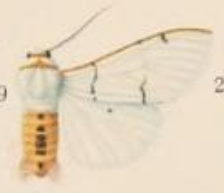
Spilosoma buryi is a moth in the family Erebidae. It was described by Walter Rothschild in 1910. It is found in Ghana and Nigeria.

Spilosoma holoxantha is a moth in the family Erebidae. It was described by George Hampson in 1907. It is found in Nigeria and Uganda.

Spilosoma nigrocastanea is a moth in the family Erebidae. It was described by Walter Rothschild in 1917. It is found in Malawi.
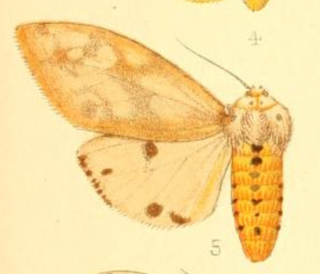
Spilosoma rava is a moth in the family Erebidae. It was described by Herbert Druce in 1898. It is found in Cameroon, the Democratic Republic of the Congo, Equatorial Guinea, Gabon, Ghana, Kenya, Liberia, Nigeria, Senegal, the Gambia and Uganda.

Cotana meeki is a moth in the family Eupterotidae. It was described by Walter Rothschild in 1917. It is found in New Guinea.




















